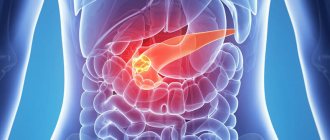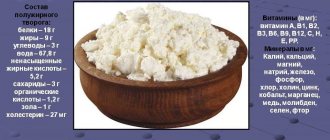Every Monday on AiF Health - a new set of exercises for beauty and health. This week - a set of 8 exercises that will help improve intestinal function, strengthen the abdominal muscles and improve blood circulation in the abdominal organs.
The remains of digested food lingering in the intestines poison the body with toxins, cause headaches, insomnia, anxiety, and can cause more serious health problems. A single case of constipation is not so terrible, but if it becomes chronic, immediate action must be taken.
Gymnastics for a lazy intestine
First of all, you need to find out the cause of constipation. After all, it can be caused not only by banal colitis, but also by duodenal ulcers and other serious diseases. However, the most common cause of constipation is a sluggish, lazy intestine when peristalsis is slow. In this case, it can be stimulated through physical exercises that train the abdominal muscles, diaphragm and pelvic floor, as well as self-massage and diet.
| Important | |
| A combination of gymnastics and self-massage is contraindicated for umbilical hernia, intestinal or duodenal ulcers, pregnancy, high blood pressure, and during menstruation. They cannot be done on a full stomach. After eating you need to wait at least 2 hours. | |
Gymnastics that “awakens” the intestines are very simple and do not require any incredible effort; you will master it quickly. Moreover, which will please many, a good half of the exercises are performed while lying in bed. The main thing is not to be lazy and do it regularly. Then it will stimulate intestinal function by improving blood circulation in the abdominal organs, strengthening the abdominal muscles, and will also facilitate the passage of gases during flatulence.
Article on the topic
Prevention of constipation: 9 reasons for bowel dysfunction
1. Starting position (I.P.) – lying on your back. Bend your knees slightly and make movements with your legs that imitate riding a bicycle. Repeat 30 times.
2. I.P. - the same. Pull your legs bent at the knees with your hands to your stomach, return to IP. Repeat 10 times.
3. I.P. - the same. Raise both legs at the same time and try to throw them behind your head - 10-15 repetitions.
4. I.P. - lying on your back, legs bent at the knees. Bring your knees in and out – 15–20 times.
5. I.P. - kneeling, resting his outstretched arms on the floor. The spine is parallel to the floor. Raise your left leg bent at the knee, then your right. Repeat 10 times for each leg.
6. I.P. - the same. Take in air through your mouth, as you exhale, bend your lower back down and relax your stomach. Hold this pose for a while. Return to I.P., take in air through your mouth. As you exhale, pull in your stomach and arch your back upward, like a bristling cat. Do 20-30 reps.
7. I.P. - standing, arms along the body. Exhale deeply, pull your stomach in and out. Repeat 5-8 times. This exercise perfectly massages the internal organs and improves intestinal motility.
8. Finish the complex by walking in place with high knees – 2-3 minutes.
Among diseases of the large intestine, a large place is occupied by the so-called functional ones, and in particular irritable bowel syndrome, or irritable bowel syndrome (IBS), which is considered by many researchers as a polyetiological disease characterized by disturbances in the motor-evacuation and sometimes secretory function of the small and large intestine in the absence of morphological changes in the intestinal wall [1].
According to the Rome III criteria, the following types of IBS are distinguished:
1. IBS with constipation.
2. IBS with diarrhea.
3. IBS, mixed type.
4. Unclassified IBS.
The complexity and ambiguity of both etiological factors and pathogenetic mechanisms underlying this pathology lead to constant revision of the criteria for selecting patients with IBS, classification of this pathology, as well as frequent changes in subtypes of IBS, which largely determines difficulties not only in diagnosis, but also in the treatment of IBS [2].
Conducted studies indicate an ambiguous type of somatopsychic disorders in patients with IBS [3]. As for visceral hypersensitivity (VHS), which is an important differential diagnostic feature for IBS, then, according to a number of authors [4], it is caused by almost the same factors as IBS in general.
The main links in IBS are considered to be cerebral and spinal disorders that lead to HCH of the intestinal nervous system, stressful situations that contribute to disruption of the motor-evacuatory function of the small and large intestines, including negative emotions, intestinal forms of food allergies, high functional activity of the small intestine in in relation to the increased secretion of non-peptide and peptide endogenous regulators and hormones by its cells, the syndrome of bacterial overgrowth in the distal parts of the small intestine and a violation of the microflora of the colon.
All of the above gives grounds for domestic scientists to replace the name “irritable bowel syndrome”, generally recognized in Europe and North America, with “irritable bowel syndrome” [5]. In addition, a significant predominance of subjective complaints and their inconstancy present great difficulties for a practicing physician in assessing the severity of the clinical course of IBS.
In addition to the variability of clinical symptoms, complex and incompletely understood connections between central and enteric nervous regulation in this disease reduce the effectiveness of drug treatment [6, 7].
The insufficient effectiveness of drug therapy is also due to the fact that the drugs used in treatment are usually aimed at a specific pathogenetic link without taking into account the complexity of the relationships between the pathogenetic mechanisms of the disease. And as literature data show, drug treatment is effective only for some symptoms and not in all patients [2].
It should be noted that in addition to the lack of a stable therapeutic effect when using modern medications, the possibility of side effects when using them cannot be ruled out. All of the above leads to a search for the possibility of using alternative methods to drug treatment, namely physiotherapy. Unlike drug therapy, physiotherapy with natural and preformed therapeutic factors is aimed at a complex effect on both local and central neurohumoral mechanisms [8].
It must be said that, despite the vast positive experience of using physiobalneotherapy in the treatment of diseases of the digestive system, its differentiated use in the treatment of IBS has only taken place in recent years. Nevertheless, the data obtained provide encouraging results not only in practical terms, but also in scientific terms. However, physiotherapeutic and other non-drug medical technologies are clearly not used enough in the treatment of IBS, without taking into account their advantages compared to drug therapy, and issues that arise in the process of using one or another physical factor require targeted study.
Thus, in studies [9] in IBS, interference currents (IT) were used using a transcerebral technique and locally on the area of projection of the colon, which, according to the literature, have pronounced analgesic and sedative effects, help reduce increased autonomic reactivity and optimize autonomic tone. The advantage of local exposure to IT on the area of projection of the colon in IBS with a predominance of constipation and transcerebral exposure in IBS with a predominance of diarrhea has been shown [9]. At the same time, the reduction in the severity of colon dysbiosis with transcerebral exposure to IT compared with the impact of IT on the projection of the colon is of undoubted interest. Unfortunately, this fact remained outside the scope of discussion by the author.
In addition, traveling pulsed magnetic field (TPMF) was used in the treatment of IBS, taking into account its anti-stress and analgesic effect [9].
However, in a comparative study of the analgesic effects of IT and BIMP, positive results were in favor of IT (63.3 and 36.7%, respectively).
The author associates the analgesic effect with a decrease in substance P and an increase in the level of serotonin in the blood when using IT, while the effect of BIMPs did not have a significant effect on the dynamics of these transmitters. But if this is so, then how was the analgesic effect achieved when using BIMPs in 36.7% of patients with IBS and what is the reason for the lack of analgesic effect in 46.7% of patients receiving IT?
In this regard, one cannot ignore the author’s conclusion that the increase in serotonin levels and decrease in the concentration of substance P, in principle, did not really depend on the type of physiotherapeutic effect (i.e., they were expressed to approximately equal extent).
When using IT with a transcerebral technique, the therapeutic effect is formed due to the stimulating effect of currents on the subcortical-stem structures of the brain, neurohumoral endocrine and immune systems. At the same time, beyond the scope of this therapeutic effect, not only questions remain regarding the specific mechanisms of the influence of IT on certain brain structures and systems, but also the very need for its purely stimulating effect on these systems of homeostasis of the body [10, 11]. It seems to us that at this stage it is impossible to assess the selective influence of electric currents on specific brain structures, taking into account their internal anatomical and physiological connection with the body systems.
It is also well known that in the transmission of the flow of pain impulses, as well as in the regulation of intestinal motor function, there is a complex relationship between nervous (parasympathetic and sympathetic impulses) and humoral (gastrointestinal hormones: VIP, motilin, bombesin, somatostatin; neurotransmitters: acetylcholine, tachinines, NO , GABA, opioid peptides, serotonin, bradykinin, PG, substance P) mechanisms [12]. It is well known that the concentration of hormones in blood serum is an integral indicator reflecting the balance of hormone production and consumption. However, the shift of this indicator in one direction or another largely depends not only on the use of one or another physical factor, but also on the functional state of the body at the time of the study, as well as its individual characteristics.
In 2010, the method of low-intensity pulsed biosynchronized magnetic therapy was used on the projection of the colon in patients with IBS with constipation [13]. In applying this method, the authors proceeded from the fact that in a low-intensity mode with a frequency coinciding with the frequency of the intestinal biopotential, this method has a bioresonance effect and helps to normalize general and regional hemodynamics, improve microcirculation and optimize autonomic tone. The state of the autonomic nervous system was determined as integrative indicators. We used data from the analysis of heart rate variability (HRV) using the Ramen-Varicard apparatus, which allows us to analyze the autonomic balance and determine the predominant type of autonomic regulation.
According to the above-mentioned researchers, after a course of treatment, there was a shift in autonomic regulation towards activation of the autonomic enteric nervous system and elimination of central imbalance due to a decrease in the central mechanisms of regulation of colon motility and activation of autonomic regulatory mechanisms, which contributed to the normalization of colon motor function.
The information content of the assessment of HRV and other indicators of the body’s functional reserves [14], assessed using the “Health Reserves” hardware and software complex, allows us to recommend this complex for assessing the effectiveness of non-drug therapy for IBS [15].
It should be noted that the complex use of physiotherapeutic factors affecting different parts of the pathogenesis of IBS is quite effective.
In the treatment of IBS A.A. Biryukova [16] used rectal tampons (temperature 39 °C) of sulfide silt Tambukan mud in combination with reflex-segmental applications at a temperature of 40-42 °C for 30 minutes (for a course of 10 procedures every other day), as well as electrophoresis of the mud solution on the projection of drivers colon rhythm, rectal electrophoresis of mud solution and drinking mineral sulfate calcium-magnesium-sodium water “Moskovskaya” at a temperature of 39 °C, 150 g per dose 30 minutes before meals. Based on the results of the study, the author noted the high effectiveness of therapeutic mud for almost all types of IBS, especially for pain.
Close to the effect of therapeutic mud was the external effect of electrophoresis of a mud solution. When the sensitivity of the mucous membrane decreased and the function of the obturator apparatus was impaired, the best treatment results were obtained using intracavitary rectal procedures (direct electric current and electrophoresis of mud solution).
Taking Moskovskaya mineral water (WM) turned out to be an ineffective method in the treatment of IBS. The author emphasizes that therapeutic mud for asthenoneurotic conditions in some cases enhanced their manifestation; as for immunological reactivity, these methods had a positive effect on the immunological reactivity of the body.
According to a number of authors [17], the use of iodine-bromine baths (temperature 36-37 °C) and IT on the colon area (current strength 30-50 mA, frequency 10 Hz, 10 procedures daily) leads to normalization of intestinal tone and improvement of biocenosis , reducing pain in 60% of patients with IBS. Adding cryomassage to this technique increased the effectiveness of treatment to 78%.
The use of cryo-SMT for constipation [18, 19], which pathogenetically hardly differs much from IBS with constipation, was quite effective in reducing pain and dyspeptic syndromes, flatulence, asthenoneurotic syndrome and normalization of stool. When cryotherapy and SMT were used separately, the effect was less pronounced.
I.I. Degtyareva [5] suggests the use of warm compresses on the abdomen, ozokerite at a temperature of 50-60 ° C for 20-30 minutes, inductothermy, and a UHF electric field for pain, spastic phenomena and diarrhea. For constipation, to increase muscle tone - diadynamic currents, SMT, galvanization of the abdominal area, hydrotherapy (warm baths, ascending and circular showers). Depending on the prevalence of certain disorders of intestinal motor activity, the temperature of water procedures ranges from 33-34 to 37-38 ° C, since cold water procedures often enhance intestinal peristalsis, and warm ones slow it down.
To the above we should add the need to study and comprehensively apply in practice physiotherapy and medications widely used today for the treatment of IBS (Dicetel, Duphalac, Duspatalin, etc.). In particular, I.N. Ruchkin and I.A. Neznamova [20] notes that when cryomassage (10-12 procedures) was included in the complex therapy of patients with IBS with diarrhea syndrome, remission of the disease was achieved more quickly, which also made it possible to minimize the prescription of symptomatic drug therapy.
There are certain difficulties in assessing immune disorders in IBS, since the nature of changes in intestinal epithelial cells (inflammation, dystrophic process) cannot but affect the regulation of the innate immune response. Intestinal epithelial cells are a component of the mucosal immune system and participate in innate and adaptive defense mechanisms, triggering and regulating the innate immune response, including to pathogenic microorganisms. Chemokines produced by epithelial cells regulate lymphocyte migration. The lamina propria is populated by plasma cells that produce antibodies and secrete immunoglobulin (Ig) A into the intestinal lumen. There are also large numbers of CD4 T cells, macrophages, mast and dendritic cells, and eosinophils. Thus, the functioning of the biliary and activated intestinal immune systems depends on the presence of normal microflora [21].
According to I.N. Ruchkina and I.A. Neznamova [20], in patients with IBS, humoral indicators of immune status were slightly changed. Weak in intensity production of antibodies of the IgG and IgE classes indicated prolonged antigenic stimulation and incomplete immune response, which, according to the authors, is typical for chronic infection of the patient’s body, accompanied by a long-term intake of foreign antigens in small quantities.
Of undoubted interest is the study of dysbiotic intestinal disorders in IBS and their role in the genesis of this disease. Is a change in intestinal microflora a consequence or a cause of IBS?
If most researchers have no disagreements regarding dysbiotic disorders in the intestines, there are differences regarding the profile of the content of individual volatile fatty acids. This indicates the complexity of metabolic changes in the intestine, which depend on the nature of not only the microflora, but also pathological changes in the mucous membrane, the individual characteristics of the body, the nature of nutrition and functional disorders of other digestive organs and the body as a whole. The above can be fully attributed to changes in neurotransmitters (serotonin, GABA, substance P, etc.) and immune status.
According to S.A. Safonova et al. [22], in patients with IBS, the permeability of the intestinal barrier was increased in 58.3% of cases, and the positive effect of sequential use of antibacterial drugs and probiotics in patients with IBS with both diarrhea and constipation led the author to the conclusion about the significance of pathological changes in the intestinal microflora in the mechanism of impaired intestinal barrier permeability.
The complex use of cryomassage and liquid synbiotics to change the intestinal microflora was quite effective in IBS with constipation [23].
Use in sanatorium-resort conditions of a complex consisting of carbon dioxide baths (8-10 procedures), internal intake and siphon intestinal lavages MV "Essentuki No. 4", rectal mud mashers, biological additives "Lactusan" (1 teaspoon 2 times a day before meals) in patients with IBS with dysbacteriosis has shown its effectiveness [24].
It is important from theoretical and practical points of view to resolve the question of how justified it is to consider IBS as a purely functional pathology.
According to A.A. Biryukova and A.S. Artyukhov [16], in patients with IBS, morphofunctional changes in the mucous membrane of the colon were revealed, consisting of granular or vacuolar degeneration of colonocytes, catarrhal inflammation of the mucosa with moderate infiltration of its plasma cells within the lamina propria, a decrease in the number of goblet cells of the epithelial layer and their preservation in crypts, changes in the synthesis and secretion of mucus, which, according to the authors, is one of the causes of dysbiosis and impaired sensitivity of the colon mucosa.
An important result of research [1, 25] was confirmation of the presence of structural changes in the mucous membrane of the small intestine. In an ultrastructural study of epithelial cells of the small intestine, the authors discovered dystrophic changes in the tissue of the intestinal mucosa, the degree of which increased from proximal to distal sections, which was manifested by desquamation of the epithelium, the formation of microerosions, uneven thickening of the basement membrane, its fragmentation and destruction over some extent.
Similar results were obtained by I.N. Ruchkina and I.A. Neznamova [20] during an electron microscopic study of the mucous membrane of the colon, which revealed the development of a dystrophic process in the epithelium and stroma, while the severity of the changes also increased from the proximal to the distal parts of the colon. In addition, there was an increase in vascular permeability and the appearance of subpopulations of immature lymphocytes. In the distal parts of the colon, the number of goblet cells in the epithelium increased. In many crypts, the epithelium was represented by goblet cells, which sharply increased in size due to the secretion accumulated in them.
In light of the above, it is difficult to agree with the categorical point of view of a number of authors [26] that the mechanism of development of IBS symptoms cannot be explained by structural changes in the gastrointestinal tract.
Because, as pathologists believe [27], “...even the subtlest functional changes in a cell cannot occur without corresponding structural changes in one or another section of the intracellular conveyor.”
It is also necessary to remember that, according to I.V. Davydovsky [28], “it is virtually impossible to distinguish inflammatory processes from other reactive processes within a rigid framework, to give it the character of an “ontological essence,” i.e. a completely independent natural phenomenon."
Thus, the diversity of etiological factors, pathogenetic mechanisms, morphofunctional changes in the digestive organs, the ambiguity and complexity of neurohumoral regulation constitutes such a diverse nosology as IBS, which does not fit into a clearly defined clinical framework.
In this regard, the development of pathogenetically determined methods for using physiotherapeutic methods should be based on knowledge of the characteristics of the course of various variants of IBS, caused by a combination of many etiological factors, including social, pathogenetic mechanisms, as well as individual characteristics of the body. At the same time, the complex therapeutic effect on the patient’s body, characteristic of physical factors, aimed at both local and central neurohumoral mechanisms, should not exceed the adaptive capabilities of both certain body systems and the body as a whole. It must be remembered that the biological effects of physical factors largely depend not only on the localization of their influence, but also on their intensity [10].










